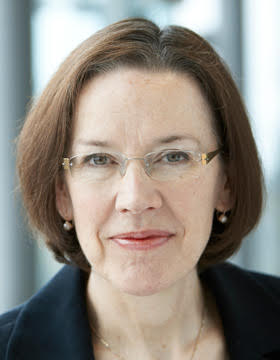Share:
Linda Holbeche, Contributor

In today’s volatile, uncertain, complex, and ambiguous (VUCA) post-pandemic world the pressures on leaders to navigate a way to success for their organizations are enormous. Leading in this new era is not the same as the old “business as usual.”
With a complex backdrop of turbulent political and economic conditions, shrinking product life cycles, disrupted supply chains, and the changing expectations of customers and workers, many companies find that the basis of their competitive advantage is rapidly eroding, and their business models are becoming obsolete.
Similarly, the accelerated adoption of digitalization, AI, and automation that are reshaping work and working patterns post-pandemic, such as hybrid working, has raised the leadership challenge of inspiring and motivating people to a new (fever) pitch.
If organizations are to survive and thrive in today’s fluid landscape, they must shift their business models—and their leadership skills—to become what Heifetz and Laurie call “adaptive firms.”
Essentially, to be adaptive, business leaders and people who work in organizations must adopt agile practices and the mindsets that underpin them. Agility is not a stand-alone capability; it must be complemented by organizational resilience or the ability to learn and recover from significant setbacks and keep people engaged and motivated.
Organizations need people who are engaged and motivated to do their best work. They must be customer-centric, make swift and effective decisions, be willing to experiment, and work effectively in teams that cross organizational boundaries.
Trust is key to employee engagement. Yet today there are widespread “trust deficits” between leaders and “followers” in many walks of life.
Evidence since the pandemic that people are not happy with their working lives is reflected in the increased employee turnover leading to talent shortages variously designated the “Great Resignation,” the “Great Shift,” the “Great Attrition,” or the lower productivity reflected in “Quiet Quitting” and so on.
Without employee engagement any aspiration toward innovation and customer-centricity is futile. Simply reverting to old ways of operating will not produce the results it once did.
To perform at their best in an ever-changing world, employees need the best from their leaders. Engagement means far more than having an engagement strategy; mechanistic approaches that lack sincerity will soon be found out.
The best leaders use themselves as instruments to inspire and motivate people and shape organizational culture and communities that employees want to be part of.
To inspire and motivate others, good leaders focus on doing six key things. They provide direction even in conditions of fast change and ambiguity; they focus on employee engagement and well-being; they actively support employees; they emphasize Voice; they inspire trust; and they are active learners.
The article will examine how good leaders inspire and motivate their team members and keep them inspired and motivated.


1. Good Leaders Provide Direction Even in Conditions of Fast Change and Ambiguity
Employees want leaders to provide clear direction and priorities, especially in fast-changing times. They want to know where the business is heading and what their role will be.
Yet navigating a way forward for the business today can be challenging since cause and effect cannot be known in advance, and things may or may not occur in the same way as they did in the past.
While leadership teams are typically comfortable providing direction when they are dealing with complicated or technical problems where there may be a “right” answer, in complex situations—the area of unknown unknowns and emergence—there is no knowable or “right” solution.
With problems in the complex space, uncertainty, ambiguity, and paradox are inevitable challenges to be coped with, and change can be revolutionary and dramatic; strategy can be emergent and opportunistic, and diversity provides a competitive advantage. So, curiosity and openness are more useful.
Leaders must draw on intuition, probe, sense, respond, and create the environment for patterns to emerge. That way they can focus on the critical few decisions which have the highest impact and pose the greatest risk and ensure objectives and expectations are aligned.
So how do leaders provide a clear direction and priorities and inspire people for the journey?
Engaging leaders inspire a sense of shared purpose (developing a “strategic narrative”) so that employees know what is required and feel empowered to deliver the right outputs without the need for micro-management.
In any case, Keith Grint argues that in fast-changing times, relying on top-down leadership alone is unproductive because complex or “wicked” problems are not easily resolved by individuals but demand the collective responses typical of systems, not individuals.
This will certainly require getting more people involved in strategic work and a change of stance from command and control type leaders. Gone is the heroic leadership model with a monopoly on the vision, to be replaced by a more collaborative approach to leadership and a commitment to building community and shared visions with a range of stakeholders.
This leadership model is about stimulating teamwork, which is far more achievable in complex times where a leader being seen as the source of all wisdom will often end in failure. It is the community that must take responsibility and not displace it upon the leader.
Good leaders motivate and coordinate a team-based approach and build a culture of shared purposeful leadership at every level with trust as its foundation. With tough challenges, it’s about creating the conditions to empower and enable others to make the right decisions that generate results.
Leaders must ask the right questions rather than provide the right answers, andresist the temptation to narrow or solve too soon because the answers may not be self-evident.
Good leaders are versatile and can judge when to involve employees and when to direct them. Vineet Nayyar, the CEO who led giant IT services company HCL Technologies through a profound reinvention, argues that it is essential to invert the pyramid, distribute the work of leadership, enlist the front line, and change the DNA of an entrenched organization.
John Kotter suggests building a “volunteer army”—up to 10% of the workforce at different hierarchical levels across the organization—who are stimulated to explore and develop bottom-up change around real-world challenges.
Good leaders inspire involvement by acknowledging that they do not have the answer to the wicked problem and by engaging the community in addressing the problem.
As Paul Polman, former CEO of Unilever found:
“Working together on solving something requires a high level of humility and a high level of self-awareness. When we launched the Unilever Sustainable Living Plan, people inside the company were very worried about exposing ourselves. But I did something there that I didn’t realize at the time, but that actually made a big difference, by just saying publicly I don’t have all the answers on how to do this and I can’t do it alone.”
Leaders must be prepared to listen and also to set behavioral guardrails and boundaries within which it is safe to try things out and learn as fast as possible, from both successes and failures.
This approach brings many benefits. It exploits the diversity of perspectives and experiences, draws on strengths, and builds potential in the organization. As Polman relates: “Often people ask me what my job is and I say honestly it is to make others successful, and the more you do that the more you will see that you create prosperity.”
2. Good Leaders Focus on Employee Engagement and Well-Being
Right now, in the aftermath of Covid-19, many leaders are grappling with the new ways of working, such as hybrid, and preparing for the longer-term future of work.
The global pandemic and a divisive political environment have left many people feeling isolated and insecure. Within organizations, concerns about employee mental health, safety, and well-being and desires for a diverse and inclusive workplace have risen to the fore.
Good leaders recognize that employees are integral to their success and strive to build connections and community. Looking after your people makes them feel more engaged with your organization and more committed to your service goals.
Qualtrics 2021 Employee Experience Trends Report found that, during the pandemic, having a sense of belonging to an organization emerged as the most important driver of engagement. Therefore, implementing a policy around hybrid requires building a culture of connection and engagement, with good communication, collaboration, and the sharing of knowledge.
Good leaders deliberately learn from the short-term solutions and experiments introduced during lockdowns to develop a more sustainable way to enhance the employee experience. They keep mental health on the agenda and use internal forums and channels to stimulate a culture of open, non-judgmental conversations.
This relationship focus requires social leadership and emotional intelligence, the ability to improve interpersonal dealings within a group, and acknowledging and working through historically dysfunctional relationships to create a more collaborative, whole-system approach for the future.
3. Good Leaders Actively Support Employees
The role of leaders and managers should be to enthuse and encourage employees so that they can create a different shared value: enhancing employees first and customers second. The most effective leaders are both task- and relationship-oriented.
It’s about creating energy around mission and vision and making it possible for people to do their jobs. Good leaders design jobs that are meaningful, make empowerment real, and insist on greater autonomy and decision-making at the right level.
Engaging line managers set clear objectives so that people know what is required but allow staff to work out how to deliver them. They ensure employees have the skills, authority, and resources they need to deliver results that matter.
They de-clutter jobs of unnecessary bureaucracy so that people have a clear line of sight through their day job to the purpose, mission, and goals of the organization. They watch for signs of ‘burnout’ and aid people in managing workloads by being clear about what can be stopped as well as started.
They recognize great efforts and judge performance based on outputs and outcomes rather than hours spent in the office. Measuring and celebrating these achievements helps everyone appreciate their contribution and fully embed the new ways of working.
They champion employee interests and coach and encourage their teams. They create scope for people to develop and look for opportunities to upskill and reskill individuals and teams, deliberately encouraging people to change roles/re-energize themselves by moving between domestic and international divisions or from one country or department to another.
This allows them to gain new experiences and helps develop different parts of the business and is also a great motivator. After all, when people feel valued and have opportunities to grow, they are likely to perform well. If jobs are at risk, they look for redeployment opportunities wherever possible.
4. Good Leaders Emphasize Voice
During the pandemic, many leaders communicated directly and brilliantly with the workforce using online platforms such as Zoom to keep people aware of what was happening and check in with people on how they were doing.
In the hybrid work model, communication is needed just as much, as two-way and human-to-human as possible, with leaders prepared to listen and give individual employees a louder voice through conversations, feedback sessions, and surveys.
To be fair to all, leaders should continue to use digital collaboration platforms and ensure that all meetings take place online even when some of the team are in the office together. A well-designed and managed two-way internal communications process is essential.
In one organization, it was recognized that moving into hybrid working, a combination of travel restrictions and turnover across the organization meant that colleagues felt detached from senior leaders and the discussions happening at the senior management team and supervisor levels, leading to a sense of disconnect.
To counter this and reconnect senior leaders with colleagues across the organization, directors deliberately started a series of visits and communication forums (both in-person and virtual over MS Teams), to raise visibility and transparency about their roles, the work, and the decisions that were being made, as well as creating spaces and opportunities for them to engage in listening exercises with teams both within and across their departments/divisions.
The impact of these activities can already be seen in the high level of engagement (both in numbers and in qualitative contributions) in organizational town halls and in various yammer communications. The focus on building and maintaining relationships across departments and teams will be monitored within future staff engagement surveys.


5. Good Leaders Inspire Trust
To respond to the engagement challenge in this new era, the importance of values-based leadership cannot be overstated. Getting back to why the organization exists—its key purpose—is central to unlocking employee motivation.
In an era of employee activism, staff want employers to stand for certain values and will agitate when necessary, with many younger employees (and investors) pressing employers to embrace ESG principles and valuing purpose above pay.
Similarly, the UK’s Great Places to Work awards (2022) suggested that there had been “dramatic shifts” among UK companies in awareness of inclusion and diversity issues, and the environment over the previous year. Employees expect greater equity, transparency, flexibility, and purpose in their work.
If leaders and managers want to build a more resilient employment relationship with employees, they need to win respect by being authentic—open and honest, leading in such a way that the dignity and rights of others are respected—and they must walk the talk on values. Values-based leaders never change their fundamental principles and values, only their approach or strategy in any given situation.
Today team working (face-to-face and virtual) is a common way of organizing work. Gratton and Edelman’s research found that, as teams became more virtual, they typically became larger and cooperation declined unless the company had taken steps to establish a collaborative culture.
At the most basic level, a team’s success or failure at collaborating reflects the philosophy of top executives in the organization. Teams do well when executives build supporting social relationships, demonstrating collaborative behavior themselves.
The top team must show visible leadership, model the way forward with respect to values, show courage and humility, identify and address political issues that impede collaboration, be open and transparent in sharing relevant information, and avoid promoting “sharks” who achieve business results at the expense of others.
Rather than quelling conflict, you need to draw out issues and let people feel the sting of reality. With respect to defining and rewarding success, the how should matter as well as the what. Leaders need to understand and shift this behavior, allowing them to express concerns and personal vulnerabilities safely.
Vineet Nayyar emphasizes that if you want employees to believe what you are saying and follow you, you must create an environment of trust by making purpose real in company practice.
In HCL, all the enabling functions such as HR, finance, and the office of the CEO are as accountable to the employees as the employees are accountable to them. This commitment is made real in tangible ways.
For instance, HCL created an electronic trouble ticketing system where an employee can open a trouble ticket on any of these functions, who must then resolve these issues within a certain period of time. The ticket is only closed by the employees.
Similarly, management and managers are as accountable to the employees as the employees are to them. This accountability is evident since the CEO’s 360-degree is done by 80,000 employees across the world, and the results are published on the web for all to see. This culture unlocks a huge amount of energy in the corporation.
6. Good Leaders Are Active Learners
To inspire others and help their organizations to thrive in the new environment, leaders must use themselves as instruments of change. This may require mindset shifts for people at all levels but especially for top teams who may need to rewire their own mental models for adaptability and complexity.
For instance, embracing shared leadership in hybrid environments can be hard since whole generations of senior leaders have reached executive roles based on their technical and business prowess in a culture where office working is the norm.
Good leaders model the way forward by actively learning new approaches themselves, opening their minds to new approaches to leadership, trying out new techniques, receiving fresh knowledge from outside their system, and stepping out of their comfort zone. They strive to role-model the values and use and act on 360-degree and other feedback to show commitment.
As we have discussed, today’s leaders have a wide skills agenda. They need to lead in complexity, make evidence-based decisions, and be a relationship/network builder, culture developer, change manager, talent developer, and enabler of shared leadership.
Given the importance of relationships, good leaders are emotionally intelligent and have effective negotiating, influencing, and conflict-resolution skills. They appreciate others, show empathy, and can engage in purposeful conversations demonstrating questioning and reflectiveness.
What sets outstanding leaders apart, according to the Work Foundation, is that they think systemically and act long-term; bring meaning to life; apply the spirit not the letter of the law; grow people through performance; are self-aware and authentic, putting leadership first, their own needs second; understand that talk is work; give time and space to others; and put “we” before “me.”
Key qualities of values-based leaders that emerge from various studies include self-reflection, balance, self-confidence, courage, and humility.Such leaders have learned to get in touch with what they consider important and have developed their own set of beliefs.
For Paul Polman, formerly CEO of Unilever:
“As a leader you’ve got to think about how you can develop yourself so that you can make some of these crucial decisions for the future. First of all, you need to feel comfortable about who you are. So a good leader, I think, is a good human being in the first place. Too often we are being programmed by the environment around us to behave differently. But I think a true leader is an authentic person, who feels good about who he is. I don’t have a problem crying when I need to cry. There’s nothing wrong with that and showing that you care because it’s the same in any organization; if you show that you care, others will care for you, 100%.”
Indeed, many of the skills needed today and associated with agility have long been identified with psychological and change management studies. Training employees in those areas can also make an important difference in team and organizational performance.
As Marcel Proust pointed out: “The only real voyage of discovery consists not in seeking new landscapes but in having new eyes.”
Conclusion
A VUCA world doesn’t make the conventional discipline of leadership irrelevant; it raises the bar on the discipline required to succeed with vision, understanding, clarity, and agility.
During the pandemic, many leaders role-modeled bold leadership. Whatever life threw at their businesses, they took the opportunity to adapt their organization to become more agile and resilient, adapted to an epoch-making “Black Swan” event, created innovations, and helped their organizations prevail. They focused on enabling and encouraging staff.
Today, good leaders must build their organization’s ongoing capacity for change by embedding learning and deliberately encouraging experimentation and innovation.
Increasingly, leadership and leadership development are seen as inherently collaborative, social, and relational processes. Leadership will be understood as the collective capacity of all members of an organization to accomplish such critical tasks as setting direction, creating alignment, and gaining commitment.
For leaders, the shift taking place is towards exercising influence rather than directive control. Taking this next step will require leaders at the top to gain a deeper understanding of the role of organizational systems and culture and how they can be an instrument of change.
In developing leadership communities, the main task for senior leaders is to focus on culture-building, creating the conditions that produce and reinforce collaboration, shared leadership, ownership, and accountability at all levels.
This involves paying attention to people, inspiring and motivating them online and in person, and using leadership behaviors that recognize that new ways of working and an increasingly diverse workforce may necessitate a subtle or radical shift from the established “way we do things around here.” This will require great communication, strategic conversations, and the creation of cross-organizational networks united by a shared purpose.
Perhaps the ultimate test of a leader is growing the next generation of leaders, creating a common language and set of leadership concepts that everyone understands and can relate to. Or as Steve Radcliffe puts it, “In every organization, you’ve got processes, you’ve got strategy, you’ve got structures, you’ve got people… but leadership is the ingredient which gets the best out of all the other ingredients”.

Dr Linda Holbeche is an independent coach, developer, consultant, researcher and author in the fields of HR, strategy, organization design and development and leadership. She works with UK and international clients in many sectors. A recognized thought and practice leader and voted one of the UK’s HR Most Influential, Linda was previously CIPD’s Director of Research and Policy.


